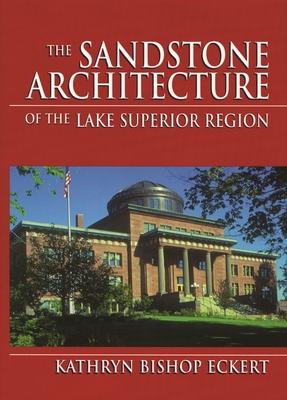Geography, geology, architecture, and biography are joined to create this detailed study of a region and the majestic sandstone with which it was developed.
From 1870 to 1910 the prosperity of the copper and iron mining, lumbering, and shipping industries of the Lake Superior region created a demand for more substantial buildings. In satisfying this demand, architects, builders, and clients preferred local red sandstone. They found this stone beautiful, colorful, carvable, durable, and fireproof. Because it was extracted easily in large blocks and shipped cheaply by water, it was economical. The red sandstone city halls, county courthouses, churches, schools, libraries, banks, commercial blocks, and houses gave the Lake Superior region a distinct identity. Kathryn Bishop Eckert studies this region as a built environment and examines the efforts of architects and builders to use local red sandstone. Eckert stresses the importance of the building materials as she explores the architectural history of a region whose builders wanted to reflect the local landscape.
